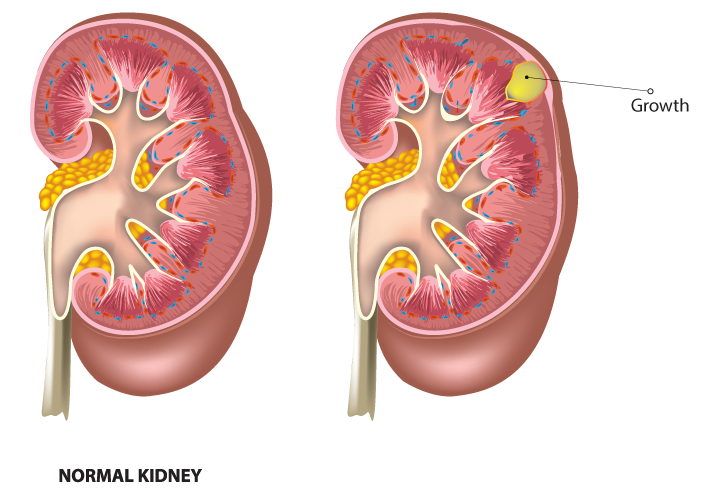Advanced Treatment for Kidney Disease
Patients suffering from kidney disease or cancer may benefit from having all or part of the kidney removed in a nephrectomy. Dr. Luis Herrera takes a laparoscopic approach to this procedure whenever possible. This method involves smaller incisions and far less tissue disruption than traditional techniques. At our practice in Tijuana, Mexico, we help thousands of patients take advantage of more affordable kidney treatment through medical tourism.
About Nephrectomy
A nephrectomy can be performed to address kidney cancer and other forms of kidney diseases. It is also performed during a kidney transplant procedure, in which a healthy kidney is removed from one patient and placed in another.
Fortunately, advancements in medicine have given us the ability to perform a nephrectomy using minimally invasive laparoscopic techniques.
There are two basic types of nephrectomy. A partial nephrectomy is performed to remove only the damaged or diseased portion of a kidney. A radical nephrectomy involves removing the entire kidney, in addition to the adrenal gland above it, the tube leading to the bladder, and the surrounding fatty tissue. In some instances, both kidneys must be removed at the same time. This is called a bilateral nephrectomy.

Benefits of a Laparoscopic Nephrectomy
Before the advent of laparoscopic technology, all nephrectomy procedures were performed using open surgery. Still used in rare cases, an open nephrectomy requires a longer healing time and poses a greater risk of complications. Fortunately, advancements in medicine have given us the ability to perform a nephrectomy using minimally invasive laparoscopic techniques. Qualifying patients experience numerous benefits:
- Shorter recovery time
- Smaller incisions
- Reduced tissue trauma
- Shorter hospital stay
- Lower risk of complications
To perform a laparoscopic nephrectomy, Dr. Herrera will make small incisions in the abdominal wall. A tiny camera will be passed through the incisions so the surgical team can see the kidneys clearly, allowing them to use small, articulate instruments to remove tissue. This procedure is performed under general anesthesia and requires a bladder catheter that will be removed several hours after surgery.
Recovery
Immediately after your nephrectomy, you will be closely monitored by your healthcare team, who will assess your electrolytes, fluid balance, and blood pressure. During the first few days of healing, it is normal to experience discomfort around the incision sites. Due to the fact that the incisions are close to the diaphragm, deep breathing and coughing could be uncomfortable. Breathing exercises are an extremely important aspect of recovery, and must be practiced in order to prevent pneumonia.
Most patients will stay in the hospital for one to seven days. While vigorous exercise and heavy lifting should be avoided for six weeks after the procedure, light activity is encouraged as soon as possible.
Following a nephrectomy, it is important to follow specific guidelines to safeguard against complications:
- Undergo regular testing for kidney function: Typically, patients can function normally with a single kidney. However, it is important to see your doctor regularly to monitor your blood pressure, protein urine levels, and waste filtration.
- Avoid contact sports: Any activity that involves heavy contact or collisions should absolutely be avoided to prevent complications.
- Eat a healthy, balanced diet: A lifestyle rich in nutritious foods and light exercise can be extremely beneficial following a nephrectomy.
Contact Our Urology Practice Today
If you are experiencing kidney issues, or if your physician has recommended a nephrectomy, schedule a consultation with Dr. Herrera. To reach a team member, contact us online or call our office at (619) 831-8735.

